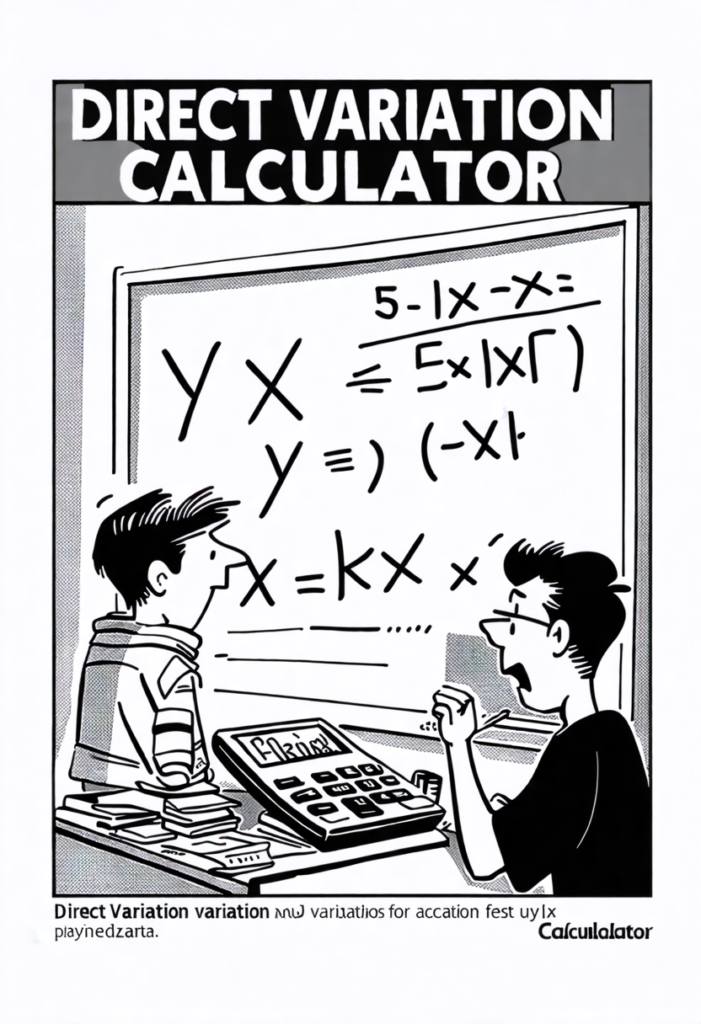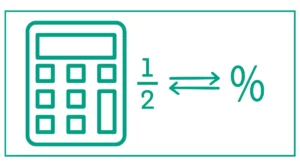Direct Variation Calculator
The direct variation calculator helps you calculate the direct proportionality between the two variables.
Enter the variables x and y to find the direct proportionality constant (k).
You can also enter any one variable and direct proportionality constant to calculate the remaining variable.
Direct variation is a phenomenon where two quantities change together and depend on each other.
Direct variation happens when two variables maintain a constant ratio, meaning that changes in one variable directly impact the other. This relationship is denoted by the equation y = kx, where k represents the constant of variation.

You might also want to determine the diamond problem values or find out the partial sum.
What is Direct Variation?
Direct variation, also known as direct proportionality, is a mathematical relationship between two variables where one variable changes in proportion to the other. In other words, as one variable increases, the other increases proportionally, and vice versa. This relationship is expressed by the equation y = kx, where k is the constant of variation or proportionality.
The Direct Variation Calculator: A Handy Tool
A direct variation calculator is a free online tool designed to help you solve problems involving direct variation quickly and accurately. This calculator can find the constant of variation, calculate unknown variables, and provide step-by-step solutions to direct variation problems.
How to Use the Direct Variation Calculator
Using a direct variation calculator is straightforward. Here’s a step-by-step guide:
- Enter the known values: Input the values you know for the variables x and y, or the constant k.
- Choose the variable to solve for: Select which unknown variable you want to calculate.
- Click “Calculate”: The calculator will process the information and provide the result.
- Review the solution: The calculator will display the answer and often show the steps taken to reach it.
Examples of Direct Variation Problems
Let’s look at two examples to illustrate how a direct variation calculator can be used in real-world scenarios.
Example 1: Distance and Time
Suppose a car travels at a constant speed. The distance traveled is directly proportional to the time spent driving. If the car travels 240 miles in 4 hours, we can use the direct variation calculator to find:
- The constant of variation (k)
- The distance traveled in 6 hours
- The time needed to travel 360 miles
Using the calculator:
- Enter x = 4 (hours) and y = 240 (miles)
- The calculator finds k = 60 (miles per hour)
- For 6 hours: Enter x = 6 and k = 60, the calculator gives y = 360 miles
- For 360 miles: Enter y = 360 and k = 60, the calculator gives x = 6 hours
Example 2: Sales Commission
A salesperson earns a commission directly proportional to their sales. If they earn $1,500 for $25,000 in sales, we can use the direct variation calculator to:
- Find the commission rate (k)
- Calculate the commission for $40,000 in sales
- Determine the sales needed to earn $2,100 in commission
Using the calculator:
- Enter x = 25,000 (sales) and y = 1,500 (commission)
- The calculator finds k = 0.06 (6% commission rate)
- For $40,000 sales: Enter x = 40,000 and k = 0.06, the calculator gives y = $2,400
- For $2,100 commission: Enter y = 2,100 and k = 0.06, the calculator gives x = $35,000
Benefits of Using a Direct Variation Calculator
- Time-saving: Quickly solve complex direct variation problems without manual calculations.
- Accuracy: Reduce the risk of human error in calculations.
- Educational: Many calculators provide step-by-step solutions, helping users understand the process.
- Versatility: Solve for any variable in the direct variation equation.
- Accessibility: Free online calculators are available anytime, anywhere with internet access.
Applications of Direct Variation in Real Life
Direct variation has numerous applications in various fields:
- Physics: Speed and time, force and acceleration
- Economics: Price and demand, production and cost
- Engineering: Stress and strain in materials
- Finance: Interest and principal amount
- Chemistry: Concentration and volume in solutions
Understanding these relationships and using a direct variation calculator can help in problem-solving across multiple disciplines.
Common Mistakes to Avoid
While direct variation calculators are user-friendly, it’s important to avoid these common pitfalls:
- Incorrect input: Always double-check your entered values for accuracy.
- Misinterpreting results: Ensure you understand the units and context of the calculated values.
- Assuming direct variation: Not all relationships between variables are direct variations. Verify the relationship before using the calculator.
- Ignoring real-world constraints: Remember that mathematical models may not always perfectly represent real-world situations.

References
- Intro to direct & inverse variation (video) | Khan Academy. (n.d.). Khan Academy. khanacademy.org/math/algebra-home/alg-rational-expr-eq-func/alg-direct-and-inverse-variation/v/direct-and-inverse-variation
- Direct Variation. (n.d.). Direct Variation. varsitytutors.com/hotmath/hotmath_help/topics/direct-variation





